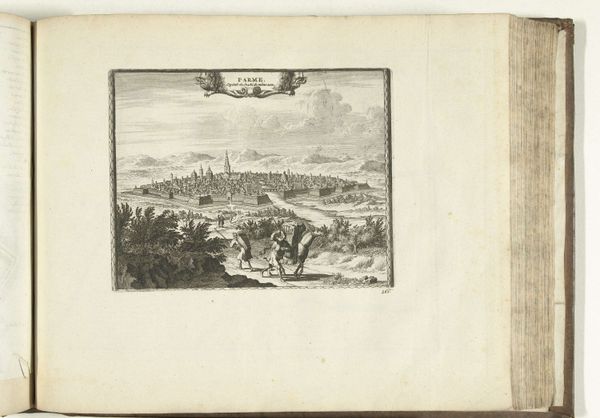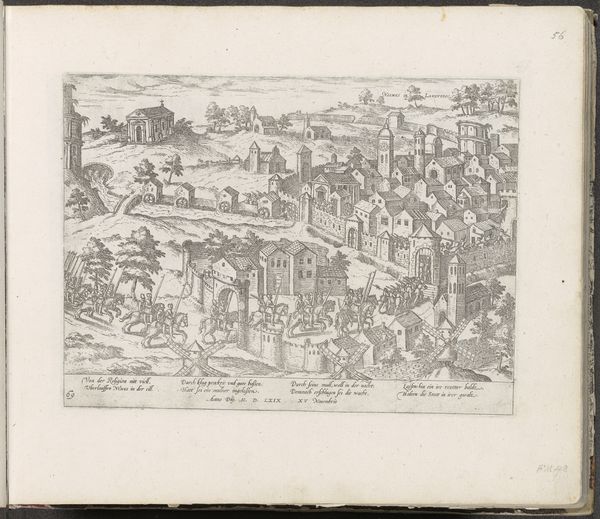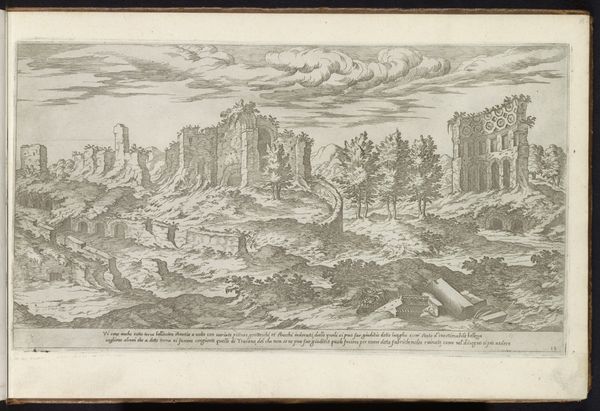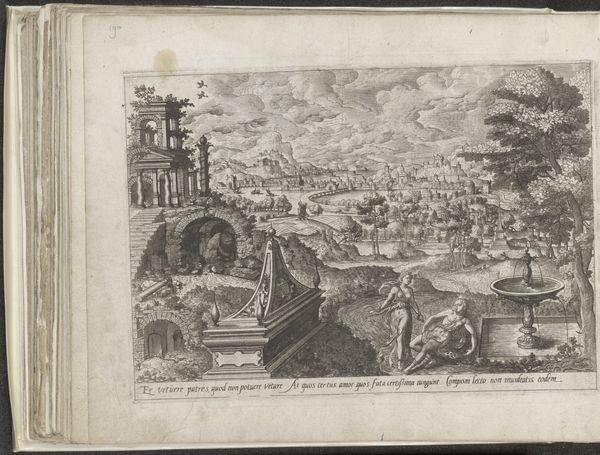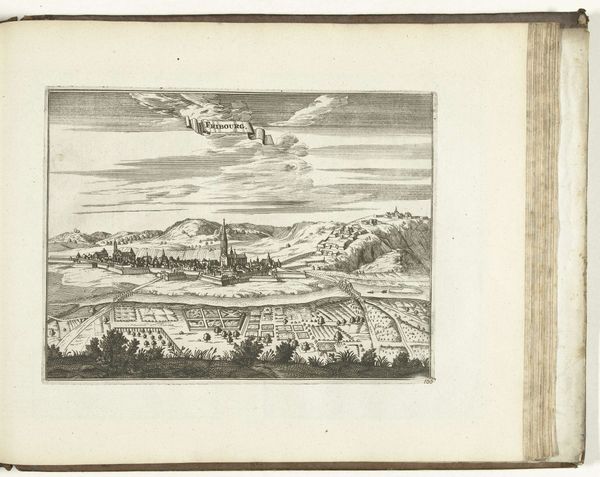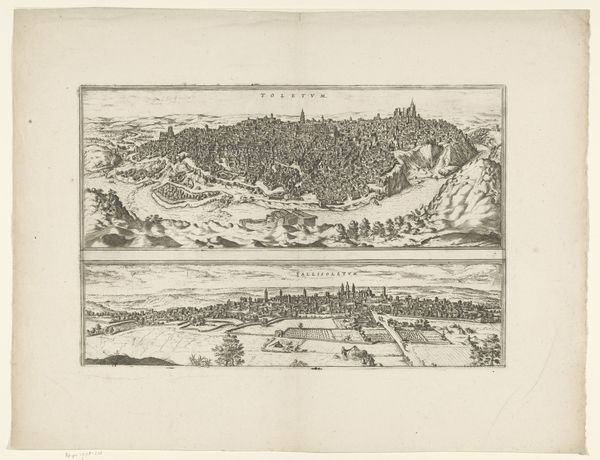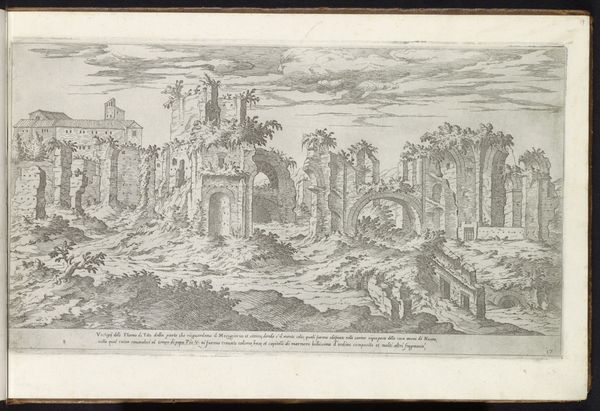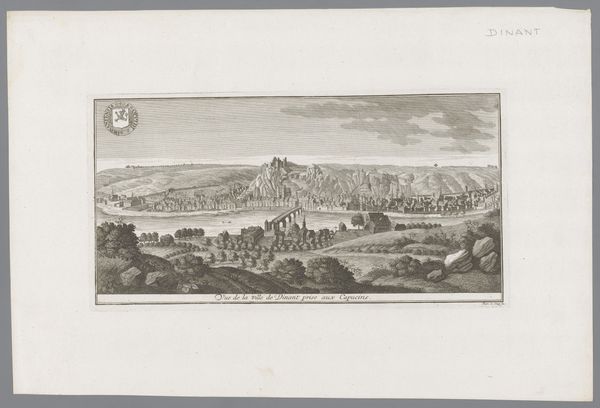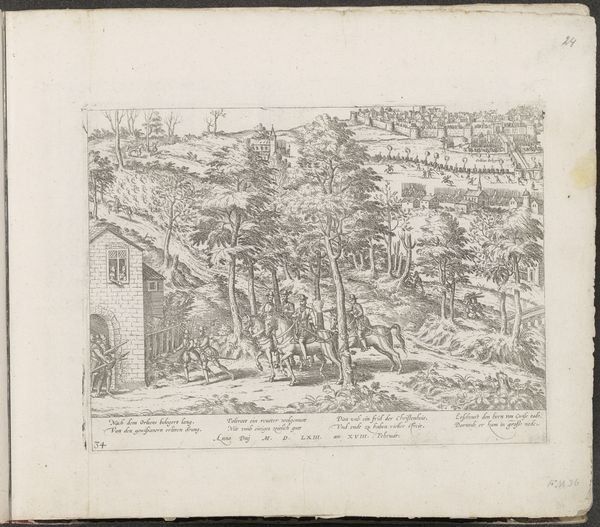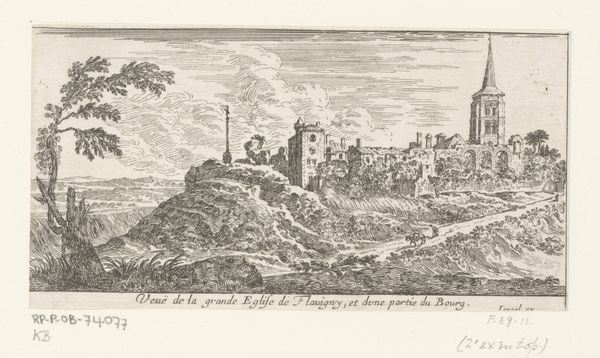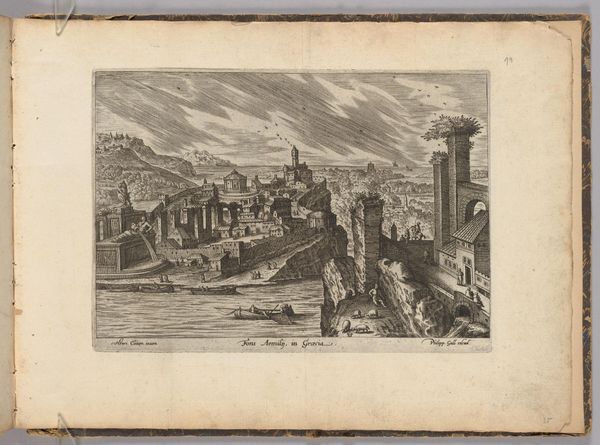
print, engraving
#
pen and ink
#
ink drawing
#
pen drawing
# print
#
landscape
#
cityscape
#
italian-renaissance
#
engraving
Dimensions: height 214 mm, width 381 mm
Copyright: Rijks Museum: Open Domain
Editor: This is Étienne Dupérac’s “Monte Celio te Rome,” created around 1575. It's an engraving, a cityscape of Rome. What strikes me is how the landscape dominates, almost swallowing the architecture. How would you interpret this work? Curator: Considering Dupérac’s “Monte Celio te Rome” through a materialist lens requires us to look at the context of printmaking itself. This engraving, as a multiple, speaks to the emerging economies of image circulation in the Renaissance. Think about the labour involved in producing these plates, the access it gave to wider audiences who couldn't afford original paintings. What kind of consumption was facilitated by such accessibility? Editor: That’s interesting. I hadn't thought about it as part of an economy. So, the print isn’t just depicting Rome, it's a commodity itself? Curator: Precisely. Consider the materials: the paper, the ink, the metal plate. The engraver’s skill transforms these into something of value. The Roman cityscape becomes a product, reproduced and disseminated. How might this democratisation of images shift our understanding of artistic value? Editor: So, instead of focusing solely on Dupérac's artistic vision, we examine the means by which that vision was made available and consumed. It changes everything! What were the dominant systems through which these images would circulate? Curator: Yes! This circulation relied upon an established network of workshops, distributors, and even street vendors. Examining these social systems involved in distribution opens further insight to understand Renaissance cultural history, going far beyond pure aesthetics. Editor: I’m starting to see this engraving not just as art, but as a node within a network of production, distribution, and consumption. I understand the term Materialist now. Curator: Precisely! We shift focus away from authorial intention and towards the material conditions of its existence, offering valuable insights for contextual analysis.
Comments
No comments
Be the first to comment and join the conversation on the ultimate creative platform.

